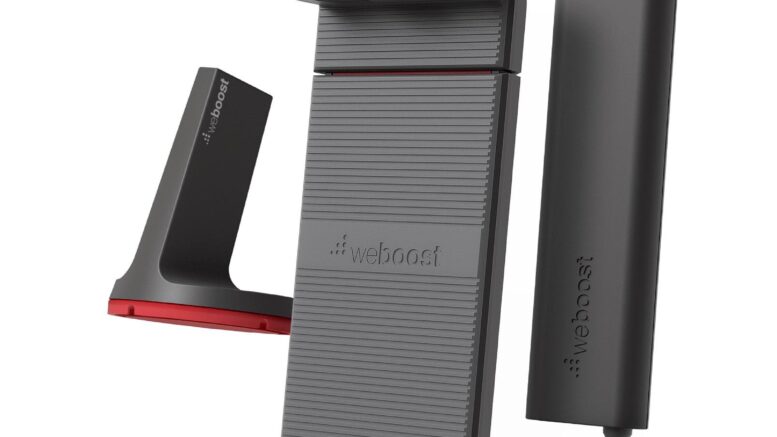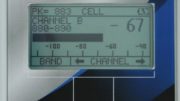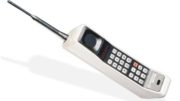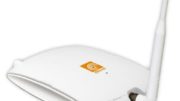5G cellular started coming into our lives in 2020 and 2021, with most phones that support it hitting the market in 2022. For most folks, nationwide 5G has meant better speeds and lower latency, even while driving. But, someone asked a question the other day about our Drive Sleek cell phone signal booster. It’s marketed as a 4G/LTE booster, but they wanted to know if it would also work for 5G. The answer is yes, but then they asked…
I saw your review video and it’s like 6 years old. How could something that came out before 5G support 5G?
I had to admit that I did this video six years ago:
So it seems that, in the words of Ricky Ricardo, I had some ‘splain to do.
Here’s a little bit about 5G cellular
5G cellular isn’t just a modification of older standards. It’s a complete top-to-bottom recreation of how cell service works. Older cell standards were built mostly to focus on voice calls, with data sort of added in as an afterthought. LTE changed that a little bit, with all signals from the phone treated as data. But there was still really a backbone built on voice, and it was limiting what cell phones could do. So, engineers set out to change that.
5G Cellular is built around high speeds, flexibility, and the idea that data is the most important thing. At some point, 5G is expected to help people with real-time remote services like telemedicine and self-driving cars. That stuff is still in the future, but people can still take advantage of higher speeds and lower latency today.
The original plan for 5G had it working with super-high frequencies, much higher than any cell phone could handle. In order to keep battery life reasonable, engineers figured out that you would need cell towers every 100-500 feet. That’s going to take some time to do, and it may never make sense in suburban or rural areas.
In order to help 5G adoption, cell phone providers started turning off old, unused 3G cell towers. This opened up a lot of frequencies for 5G use. When you hear about a cell company talking about “nationwide 5G,” they are generally talking about 5G service over those older, formerly 3G, frequencies. 5G over low frequencies is slower, but it’s still worth doing.
Good news for cell phone signal boosters
Cell boosters don’t really care what kind of signals they’re amplifying. They will work equally well with 3G, 4G, LTE, and 5G as long as they’re all on frequencies from 700-2150MHz. The booster itself has no idea what the technology behind the signal is; it only cares what the frequency is.
That’s meant new life for older cell phone signal boosters. Looking back at every cell phone signal booster made since about 2010, all of them will amplify 3G frequencies. Those frequencies are now used for 5G. Pretty much any booster made since 2016 will amplify 4G and LTE frequencies as well. The only exception is anything using the old Sprint network, but those phones are rapidly going obsolete and those frequencies are being turned off anyway.
The bottom line is that a vehicle cell phone signal booster like the Drive Sleek will boost 5G, as will all of weBoost’s home, business, and vehicle boosters.
OK there’s a disclaimer
When I say that these boosters will support 5G, I mean what most providers call “nationwide 5G.” These boosters won’t support “5G+” or “Ultra-Wide-Band 5G.” Those terms apply to 5G being broadcast on frequencies of about 3,500 MHz or 28,000 MHz. There are a few industrial cell boosters that will support some of those frequencies, but they’re not available for home or vehicle use. It has to do with power usage and the cost of the components. Plus, most home and vehicle users are happy with the increased speed and quality that today’s boosters will give them.
All cell boosters are certified by the FCC, and all new booster types must be approved in advance. That’s another thing that’s been slowing the process down, as the FCC in recent years has become increasingly political and bogged down with issues themselves. This isn’t a political blog so I’m not going to comment other than to say one thing. If a device has a computer chip in it or generates any sort of radiation (including light bulbs) it has to go through FCC approval. The FCC might not have been super important to most people 50 years ago, but practically everything we love about our modern lives passes through their hands now. I think it’s time we make sure that agency stays fully staffed and funded no matter what’s going on in the rest of government.
Don’t delay – get your cell phone signal booster today
Let’s face it. You’ve lived long enough with bad cell service. You shouldn’t have to do it any longer. Today’s cell boosters are futureproof and one booster will probably last you longer than your next 3 phones. When you think of it that way, it’s a bargain! Shop for cell phone signal boosters today at Solid Signal, or call the experts at 888-233-7563 for a personal recommendation. Our staff is here during East Coast business hours, and for after-hours help just fill out the form below.





